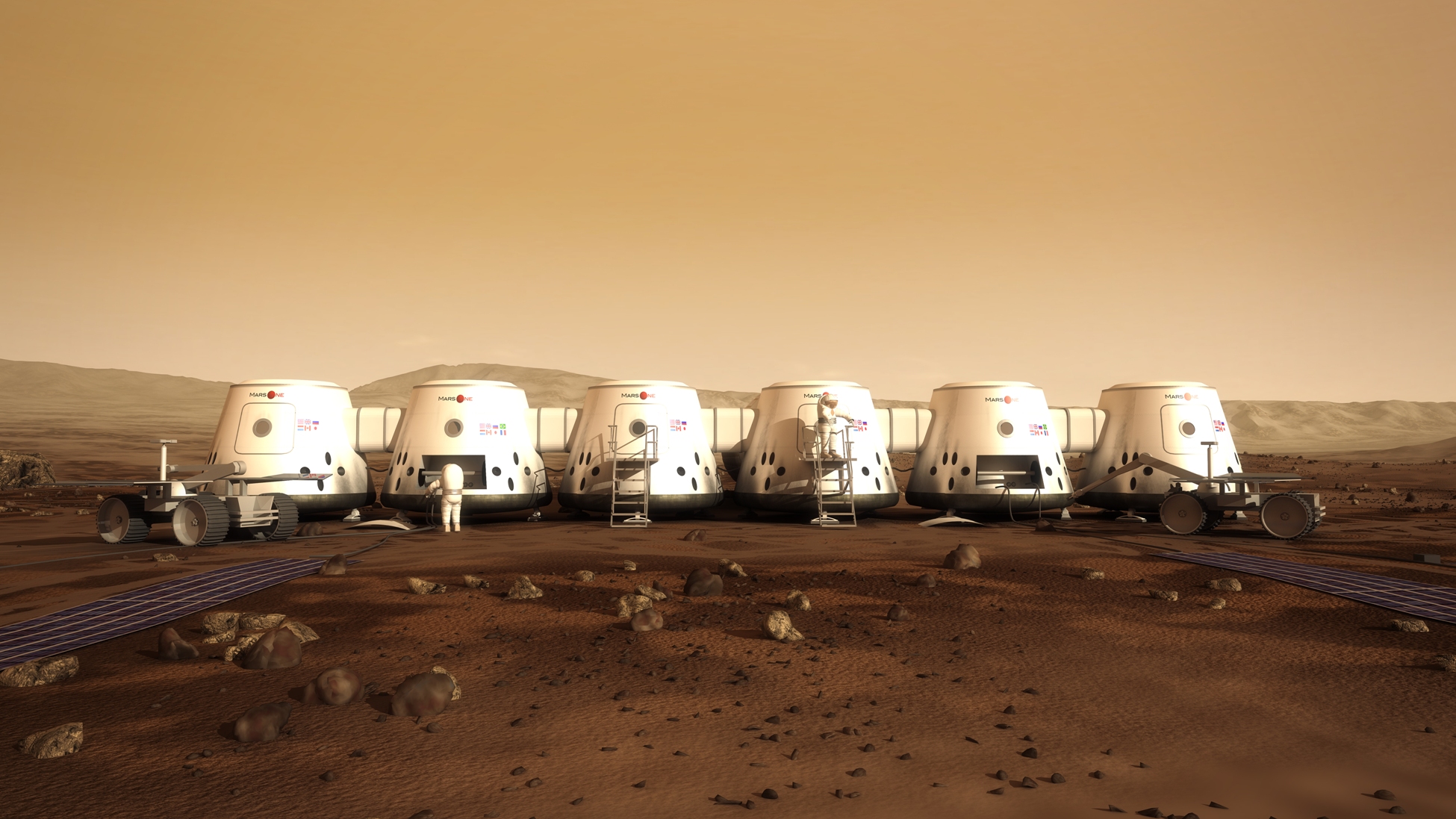
Life may well lurk beneath the Martian surface today, but it'll be tough to detect without sending humans to the Red Planet, some experts say.
It could be a long time before robots are able to drill deep into the Martian underground, explore caves and investigate other potentially life-supporting habitats on the Red Planet. So if humanity wants to satisfy its curiosity about potential life on Mars anytime soon, it should work to get boots in the red dirt, advocates say.
"We might be lucky and confirm life with robots over the next one to two decades, but it's probably going to take people to do, literally, the heavy labor to be able to do it," said Chris Carberry, co-founder and executive director of Explore Mars, a nonprofit organization dedicated to human exploration of the Red Planet. [The Search for Life on Mars (A Photo Timeline)]
Subsurface sanctuaries?
Most scientists think the frigid, dry and radiation-bombed Martian surface is unlikely to host life as we know it today. But conditions could be much more benign in underground environments such as caves or lava tubes, providing potential refuges for microbes.
"The subsurface is going to be radically different from the surface," astrobiologist and cave scientist Penny Boston, a professor at the New Mexico Institute of Mining and Technology, told SPACE.com late last year. "Every indication we have from caves of all different kinds all over this planet [Earth] shows that it doesn't take much separation vertically for a radically different environment."
Indeed, the Martian subsurface is known to harbor water ice, and several recent studies suggest that pockets of liquid water may exist beneath the red dirt as well. Here on Earth, life thrives pretty much anywhere liquid water is found, so the possibility of current Martian aquifers excites astrobiologists.
Get the Space.com Newsletter
Breaking space news, the latest updates on rocket launches, skywatching events and more!

Adding to the intrigue, Carberry said, is the fact that several different ground-based and space-based instruments have detected small amounts of methane in Mars' air. The gas could be an indicator of Red Planet life, some researchers say, since 90 percent of Earth's methane is biologically derived.
Further, scientists think methane disappears rapidly from the Martian atmosphere, meaning any of the stuff swirling there today was likely produced in the recent past.
"There is a strong, growing body of evidence that there could be subsurface life on Mars," Carberry told SPACE.com. "However, we may not be able to confirm that unless we send people."
Exploring the Martian underground
Carberry lauded the work of Red Planet robots such as the car-size Curiosity rover, whose mission team recently determined that Mars could have supported microbial life billions of years ago.
But he said the search for extant Martian life is really a job for human explorers, at least for the near future. Current robots just aren't capable of drilling several meters beneath the Red Planet's surface, for example, or rappelling down into a lava tube by themselves.
"There are so many different things, so many complicated processes, that a human could do as long as they had a backup, a partner, to help them," Carberry said, "but robots can't — or if they can, it's going to take them an awful long time."
Steve Squyres of Cornell University, principal investigator for NASA's highly accomplished Spirit and Opportunity Mars rovers, has acknowledged the slow pace of robotic explorers.
"The unfortunate truth is that most things our rovers can do in a perfect sol [Martian day], a human explorer on the scene could do in less than a minute," Squyres wrote in his 2005 book "Roving Mars: Spirit, Opportunity, and the Exploration of the Red Planet."

Protecting potential Mars life
Sending people to search for Martian life would raise some ethical concerns, however.
Every astronaut who lands on the Red Planet will bring with him or her a swarming mass of 100 trillion microbes — the diverse "microbiome" that has evolved with humans for eons and provides a number of services, from aiding food digestion to keeping pathogenic bacteria at bay.
Join our Space Forums to keep talking space on the latest missions, night sky and more! And if you have a news tip, correction or comment, let us know at: community@space.com.

Michael Wall is a Senior Space Writer with Space.com and joined the team in 2010. He primarily covers exoplanets, spaceflight and military space, but has been known to dabble in the space art beat. His book about the search for alien life, "Out There," was published on Nov. 13, 2018. Before becoming a science writer, Michael worked as a herpetologist and wildlife biologist. He has a Ph.D. in evolutionary biology from the University of Sydney, Australia, a bachelor's degree from the University of Arizona, and a graduate certificate in science writing from the University of California, Santa Cruz. To find out what his latest project is, you can follow Michael on Twitter.









